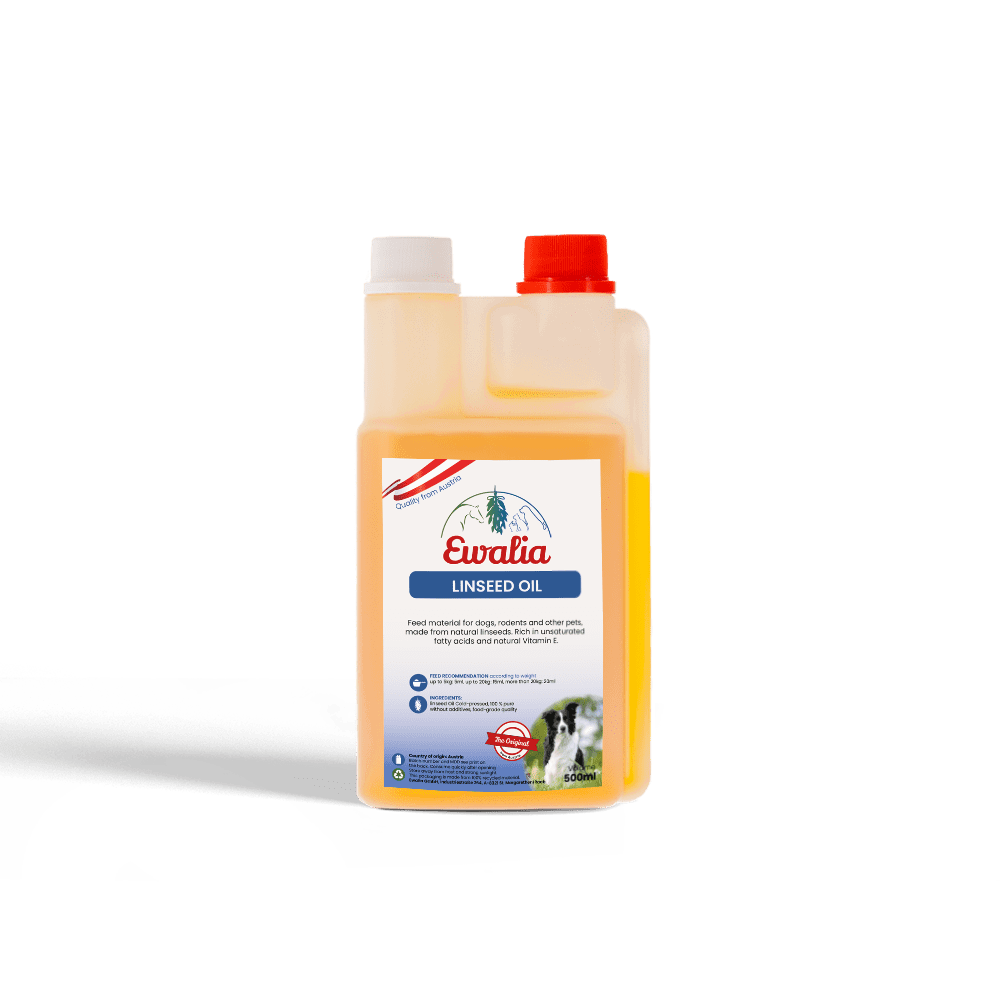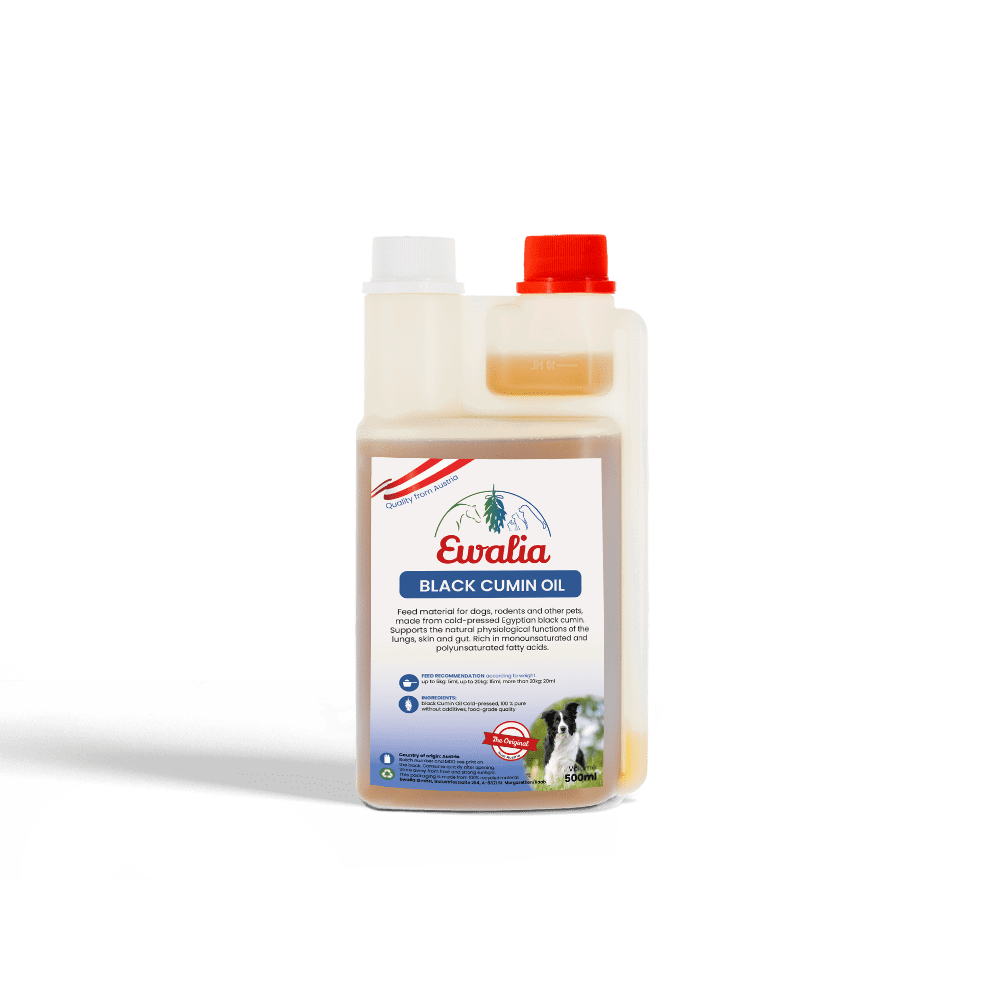Atopic and allergic contact dermatitis – herbal treatments for the immune system

Is your dog scratching excessively? If you're sure that it's not from parasites, it could be an allergic reaction to something in the environment. More and more dogs suffer from contact allergies and environmental allergies, often in the form of skin irritations. These are called canine atopy or allergic contact dermatitis. Learn more here about how to treat your dog's allergy.
What are the signs of atopic dermatitis in dogs?
The first sign you'll notice is that your dog has a severe itch, to which he responds by scratching, licking or gnawing on the affected areas. This itch can be especially intense on areas with little or no hair such as the belly, armpits, lips, eyelids or inside the ears. Heavily used areas like paws are also often affected, because micro-injuries in cracked paws facilitate the entry of allergens.
Scratching, licking or biting quickly leads to red or dark discoloured skin, scales, and sometimes unpleasant odour as well. Untreated itching can result in hair loss, skin rashes and a thickening of the skin. The already damaged skin is susceptible to bacterial infections, which can lead to a painful purulent inflammation (pyoderma). This imbalance of the skin flora also allows for the proliferation of skin fungi such as Malassezia. A chronic ear infection can develop on the outer ear. These secondary infections make the itch worse, creating a vicious cycle.
What causes canine contact allergies?
An allergy is when a substance that is actually harmless sensitises the immune system, causing it to form certain antibodies. In a contact allergy, one or several allergens – the allergy "triggers" – are absorbed through the skin. However, allergens can also enter through the respiratory tract – or in the case of a feed allergy, via the digestive tract – before they are carried into the bloodstream and thus to the skin. A genetically caused hypersensitivity to certain, normally harmless substances in the environment is probably responsible for the allergic reaction. Certain dog breeds – Boxers, Labrador Retrievers, Golden Retrievers – are particularly susceptible to atopic dermatitis. The disease may be caused by a barrier dysfunction in the skin: The cornified layer in the skin of affected dogs exhibits fewer protective lipids, and some dogs are deficient in filaggrin, a protein in the hypodermis.
Why does this make my dog itch?
Unlike an immediate allergy like an insect bite, a contact allergy does not develop into a full-blown allergic inflammation until 48 to 72 hours after contact.
In contact allergies, the allergen penetrates through the cornified layer of the skin into the subcutaneous layer. The immune system is sensitised immediately on first contact, forming allergy-specific immune cells (T lymphocytes). These T lymphocytes remain in the body as "memory cells", particularly in the spleen and lymph nodes, and "wait" for the next contact with the allergen. Incidentally, this same process also occurs in vaccinations, where sensitisation is desired. During the second contact with the allergen the T lymphocytes, which are directed against the allergen, multiply and deliver messengers to scavenger cells in the surrounding connective tissue, and the activated scavenger cells intercept the allergy trigger. However, these messengers also attract non-specific inflammatory cells, causing inflammation and reddening to the epidermis. This results in itching.
What can trigger an environmental allergy in dogs?
Frequent triggers for allergic reactions in dogs are moulds, house dust mites, and pollen from trees or grass. The allergy may be year-round or only during certain seasons, depending on the cause. Many dogs suffer stronger reactions with each passing year, with longer bouts of itching and its effects.
How can I tell if my dog has an environmental allergy?
Have your dog checked by the vet to prevent difficult-to-treat secondary infections. If your vet suspects atopy, they will first want to rule out other diseases that also cause severe itching, for example parasites or food intolerances, the latter determined through an elimination diet. If your dog is diagnosed with canine atopy, a skin test can determine the allergens involved.
My dog has an allergy: what can I do?
Unfortunately, it's practically impossible to keep your dog from being exposed to environmental allergens, but you can help by supporting your dog's immune system. What will help:
- Lots of sleep and rest
- No stress – stress weakens the immune system
- Exercise and fresh air
- Boost the immune system naturally with plant-based substances
Herbs for your dog's immune system
There are a number of medicinal plants that have positive effects on canine immune systems.
- Echinacea increases the number of T-helper cells and blocks the inflammatory messengers, inhibiting the spread of inflammation in the tissue.
- Taiga root has immunomodulating properties and is used to boost strength and vigour.
- Rose hips are high in vitamin C; they have antioxidant, anti-inflammatory properties and boost the immune system.
- Sea-buckthorn is a real vitamin bomb: its berries contain the vitamins C, E, and B 12.
- Milk thistle, artichoke and dandelion promote cleansing of the organism through the liver and kidneys.
What can I use to treat my dog's irritated skin?
Plant-based oils like linseed oil and black cumin oil are high in unsaturated fats which promote natural healing of canine skin. Hemp seeds contain omega-3 fatty acids, alpha-linoleic acid and gamma-linolenic acid, all known for their positive effects on the coat, skin and immune system.
Dogs enjoy the taste of these oils and will readily consume them.
Calming herbal oils like calendula and camomile balm can be applied externally to relieve itching. Natural salve bases such as wool grease, beeswax or shea butter provide relief and moisture to dry, flaky skin.
Sources and further literature
- Brendieck-Worm, C., & Melzig, M. F. (2018). Phytotherapie in der Tiermedizin. Stuttgart: Georg Thieme Verlag KG.
- Veterinärmedizinische Universität München. (26. September 2020). Von https://www.med.vetmed.uni-muenchen.de abgerufen





















